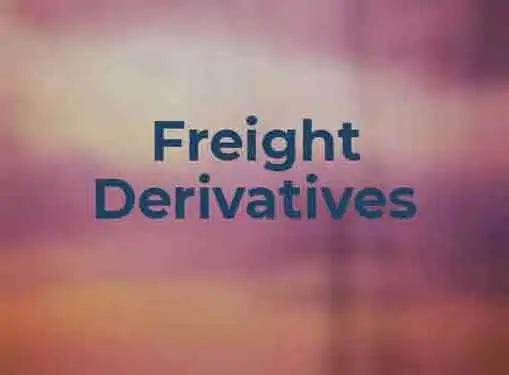Business Finance
Freight Derivatives
Written by Bennet Grill for Gaebler Ventures
Freight derivatives are growing in popularity as companies rush to hedge against dramatically rising or falling freight rates.
As the world becomes more of a global marketplace, businesses in the United States have been developing relationships with overseas companies at a rapidly increasing rate.

Often times, a product will be physically produced overseas and then shipped to the United States. The profit margins of such businesses can be greatly affected by the cost of the transportation of goods.
Freight derivatives are a tool businesses can use to reduce the risk they are exposed to from the change in shipping prices.
Who Buys Freight Derivatives
Like energy derivatives, freight derivatives are used by two chief market players--hedgers and speculators.
Hedgers in the freight derivative market include ship owners or operators, oil or petroleum companies, and grain and store houses. These businesses transport many goods and try to protect themselves from volatile changes in the cost of transportation.
Like other derivative markets, the speculators are composed largely of investment banks and hedge funds, who aim to profit by trading freight derivative contracts.
Types of Freight Derivatives
The most common form of a freight derivative is called a Forward Freight Agreement, or FFA. FFAs can trace their beginnings to over a decade ago and are traded over the counter (OTC,) meaning each buyer and seller is specifically matched for each transaction.
With such a system, individual FFA contracts can be tailored for the type of freight derivative contract a hedger or speculator wishes to purchase.
Freight derivatives also come in the form of exchange traded futures, which are traded in a market system and are based on standardized shipping routes and indices.
Freight derivatives, like all derivatives, are essentially a form of betting. A hedger or speculator in the freight derivative market bets whether the freight cost will be higher or lower than one predicted in one of the indices-- such as the Baltic Dry Index or Platt's Index which publish predicted rates of freight costs.
In a typical freight derivative contract, there is a defined contract route, contract rate, contract period, and settlement rate. As you probably guessed, the contract route is the path of shipping being bet on. The contract rate is the predicted average of freight rates over the contract period. The settlement rate is the actual average of freight rates over the contract period. The difference in the settlement rate and contract rate is multiplied by the contract period to determine the settlement sum, which is paid to the purchaser of the freight derivative. If the settlement rate is lower than the contract rate, then the purchaser of the freight derivative must pay the seller the settlement sum.
Freight derivatives are traded on the International Maritime Exchange (IMAREX.) the Norwegian Futures and Options Clearinghouse, and the New Year Mercantile Exchange (NYMEX).
More information can be found on freight derivatives on the following sites:
- http://www.nymex.com/fre_main.aspx
- http://www.olympicvessels.com/derivatives.php
- http://www.freightinvestorservices.com/ffas
Bennet Grill is a writer who has a passion for business and finance. He is currently an Economics major at Duke University in North Carolina.
Share this article
Additional Resources for Entrepreneurs

Conversation Board
Questions? Comments? Suggestions? Share your thoughts on freight derivatives.